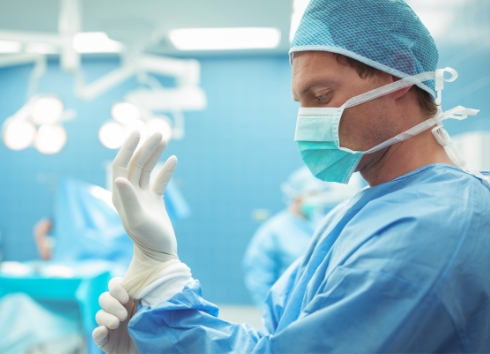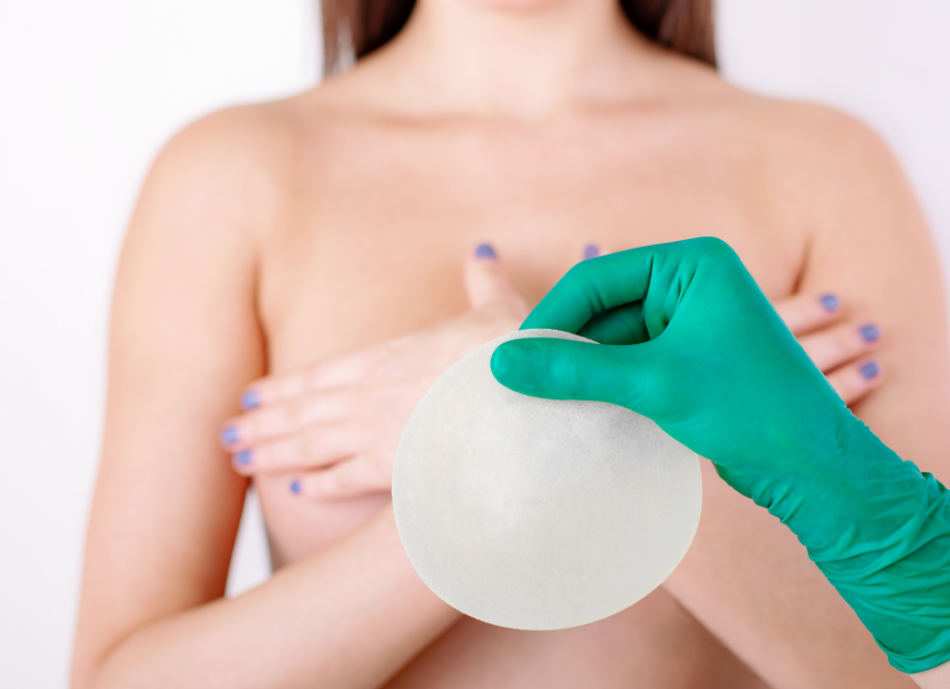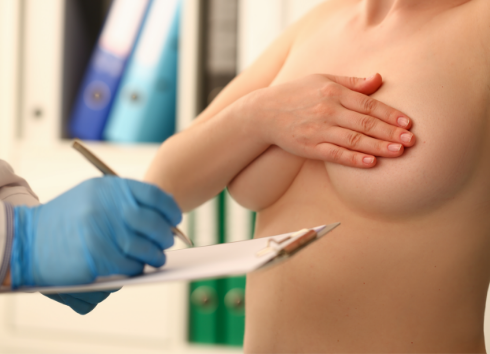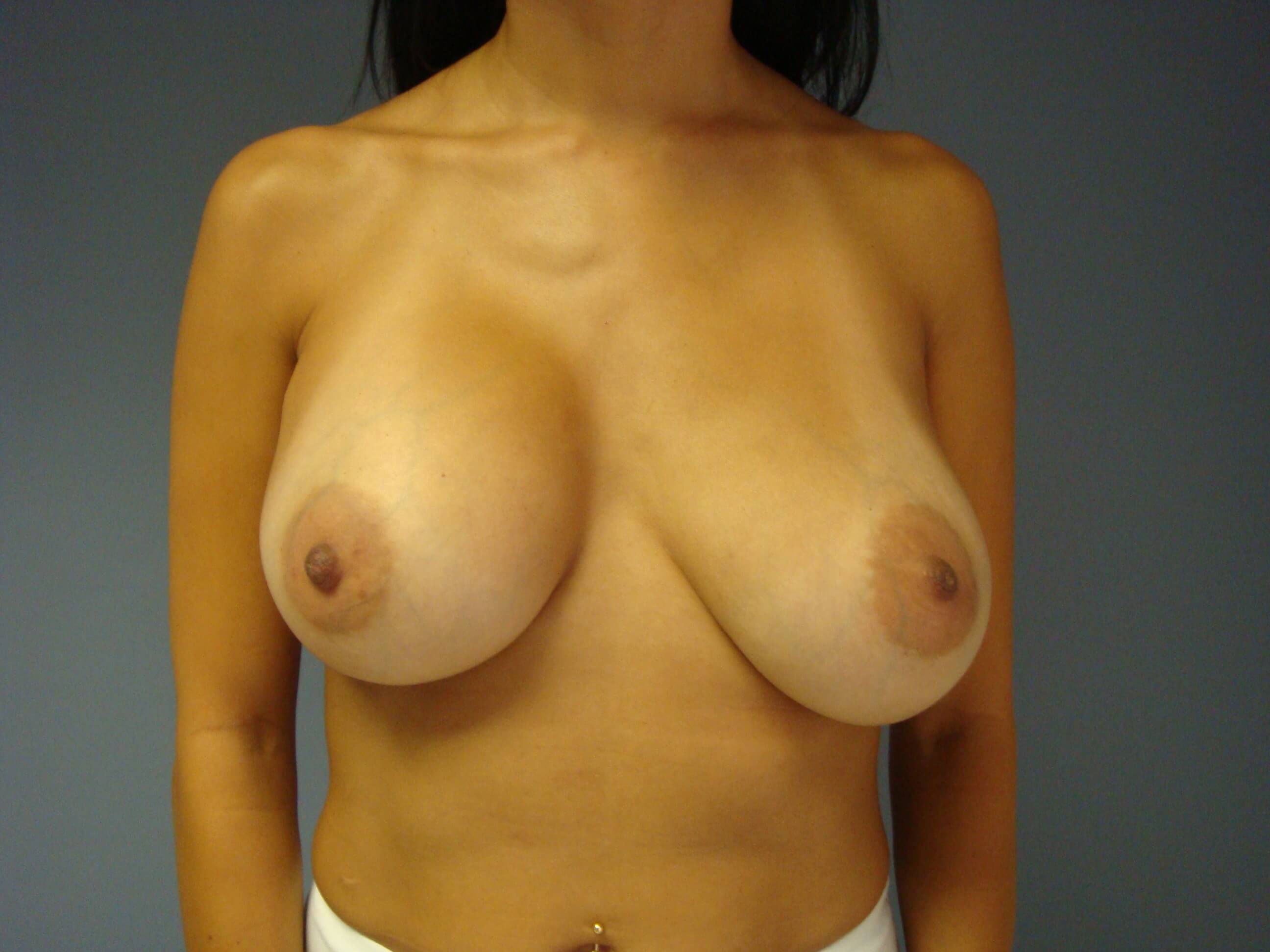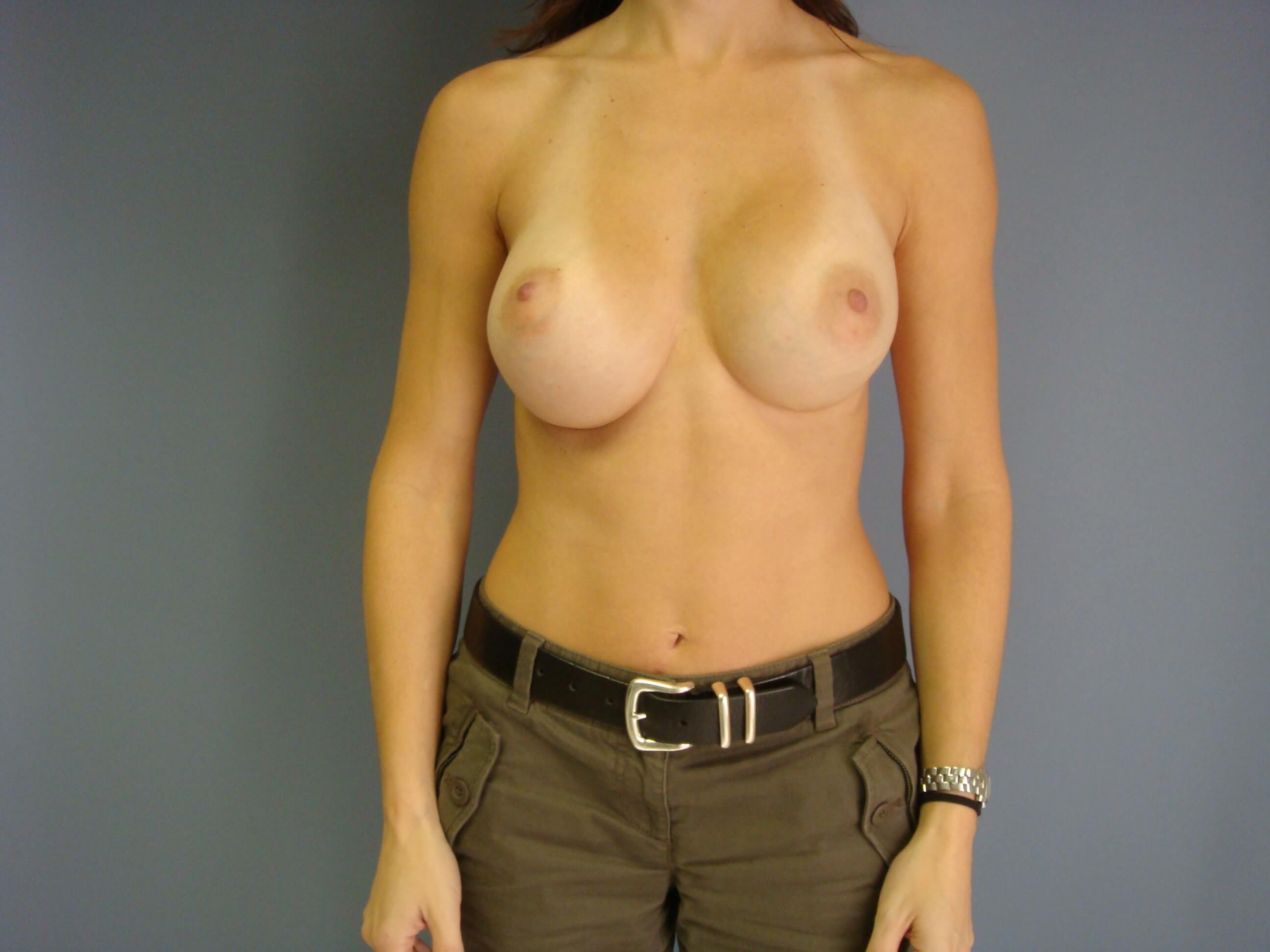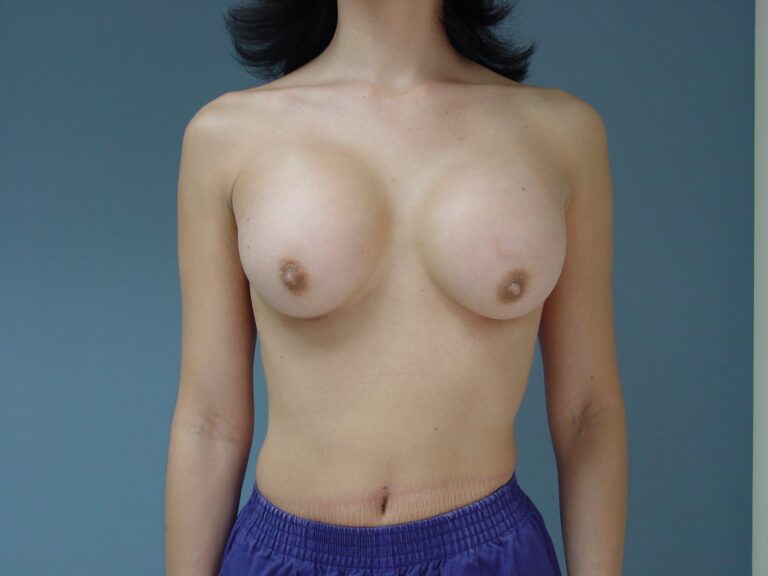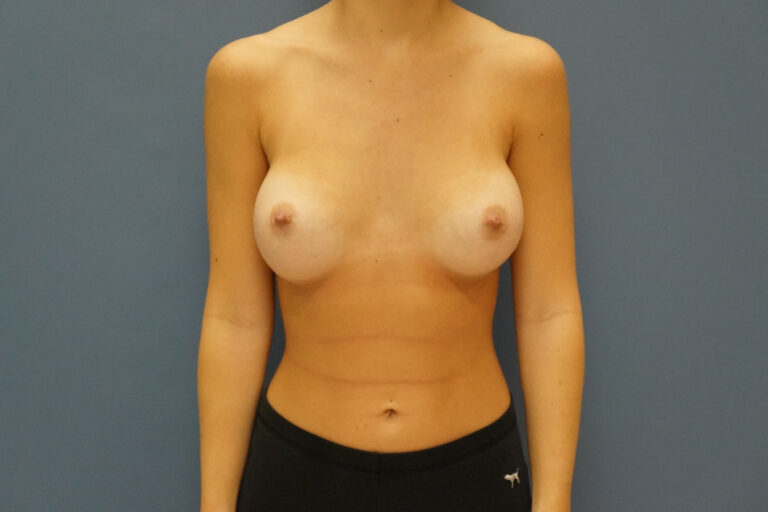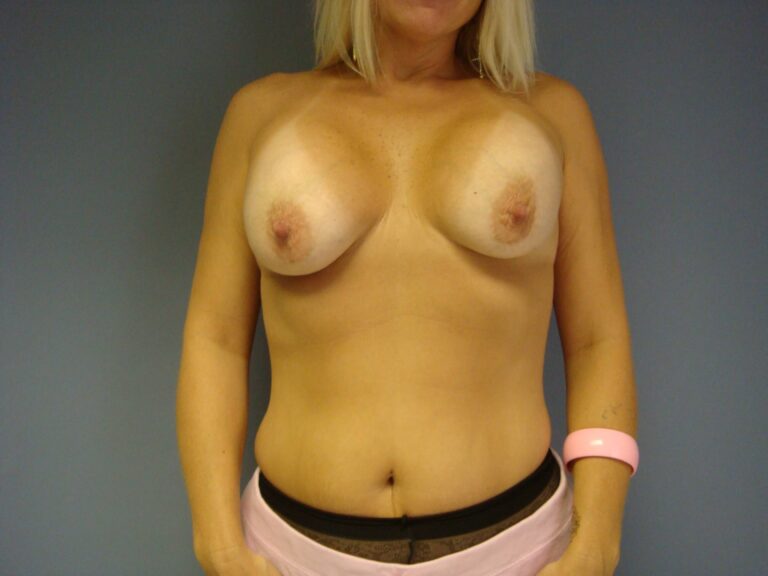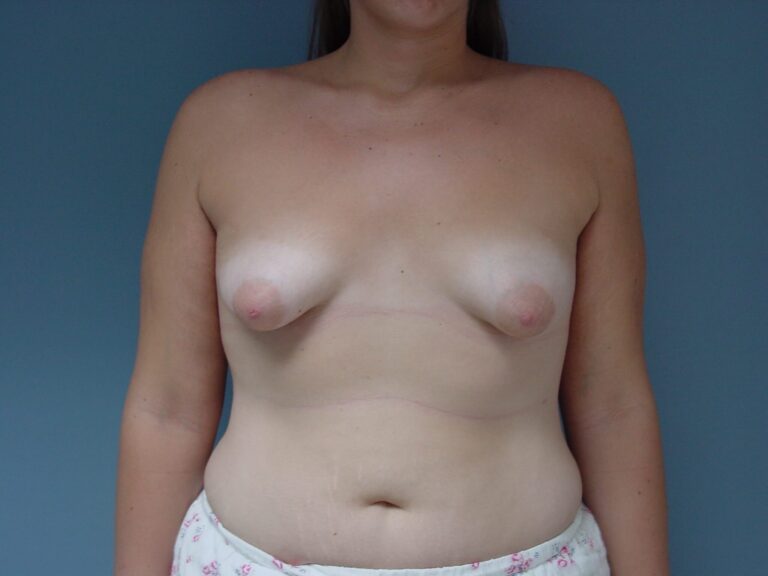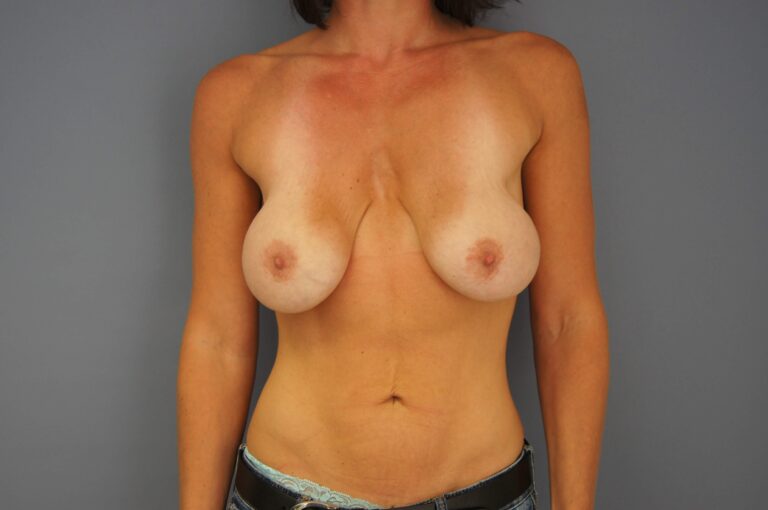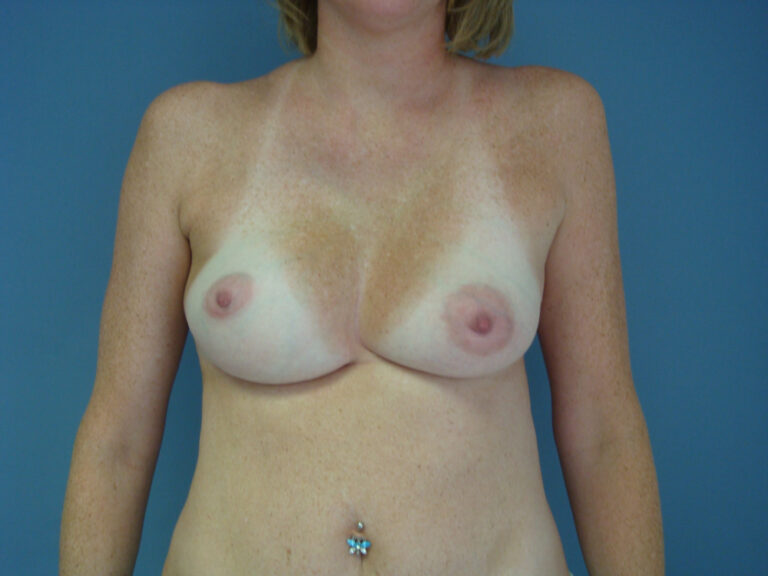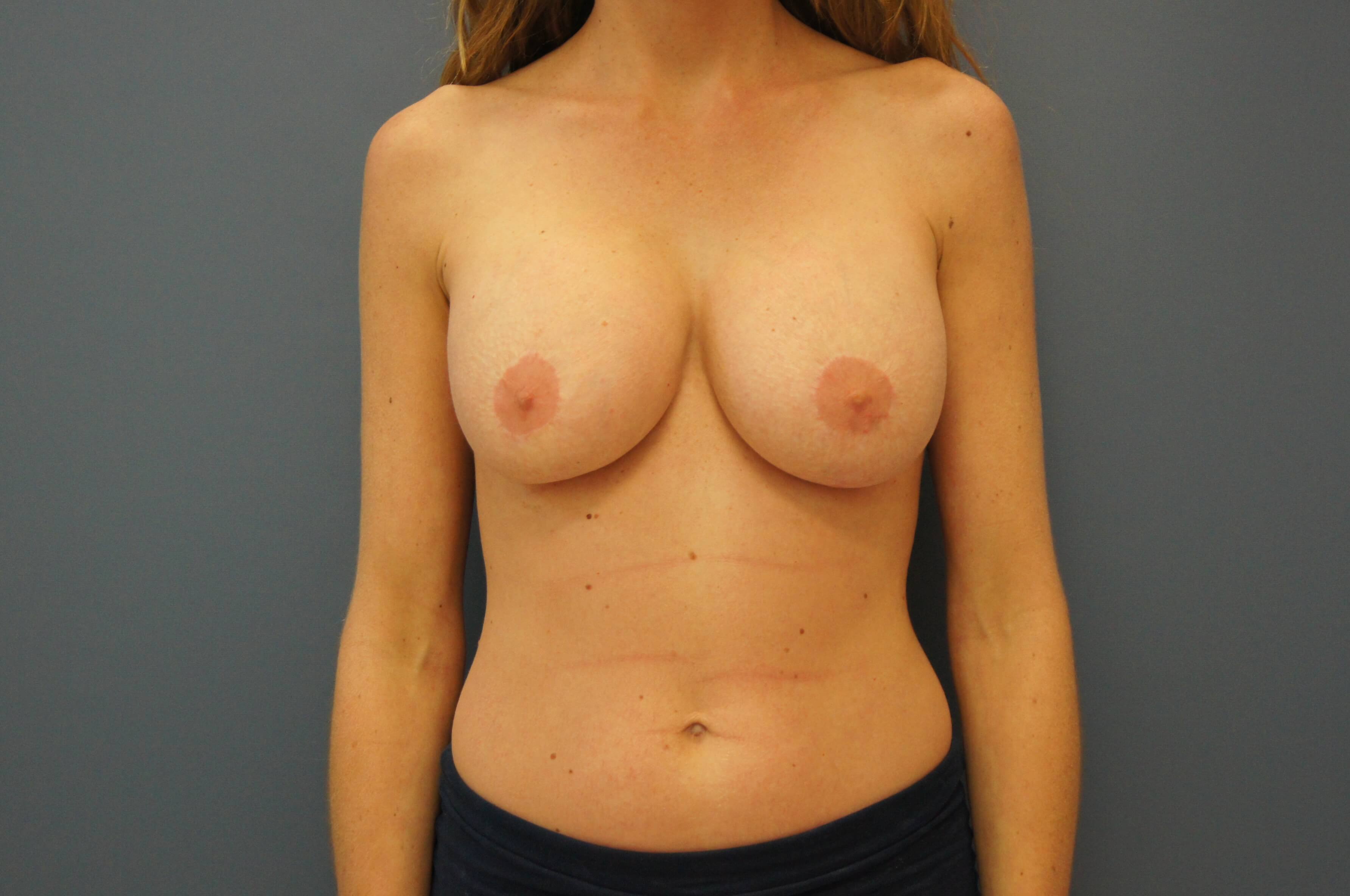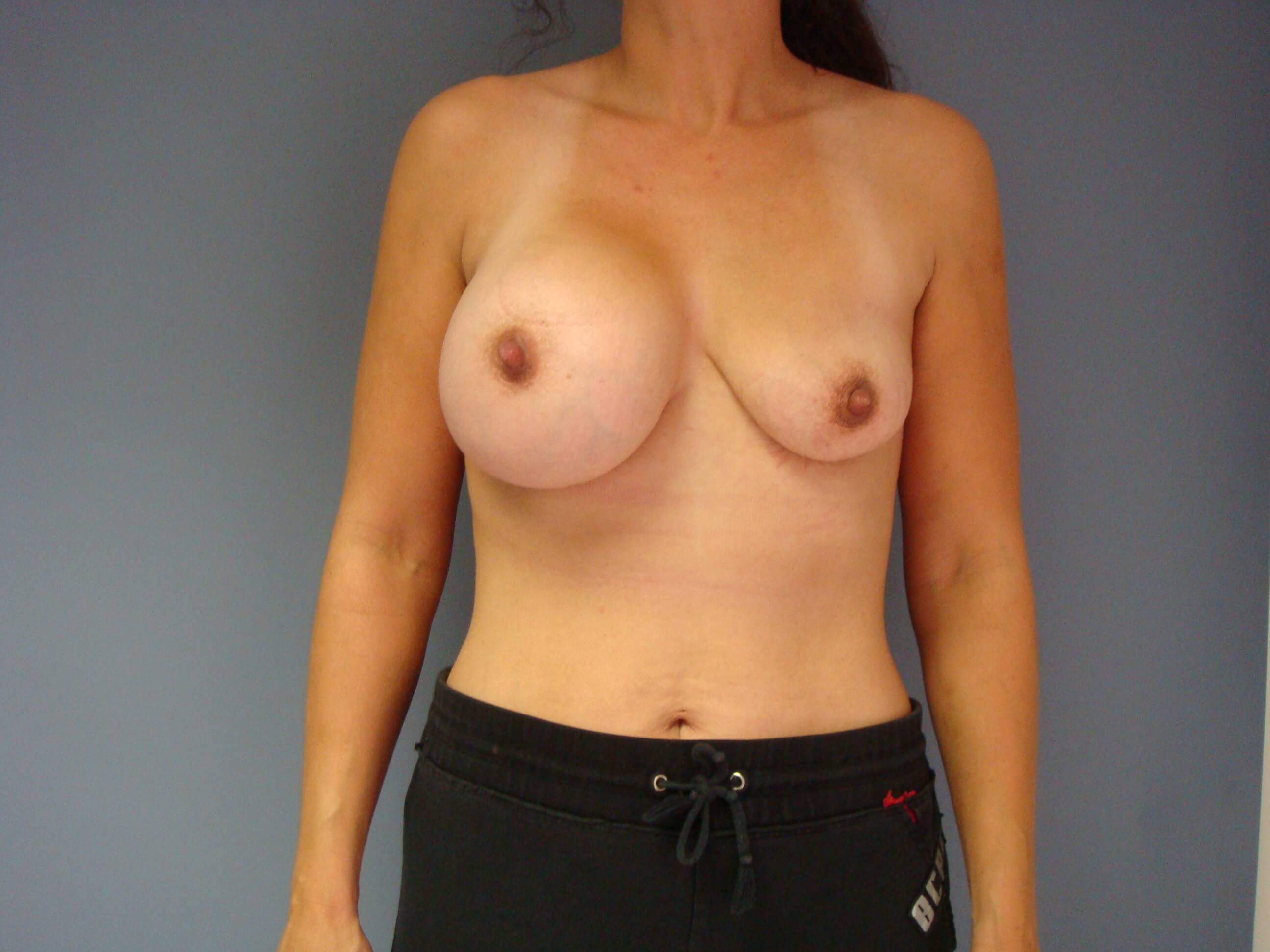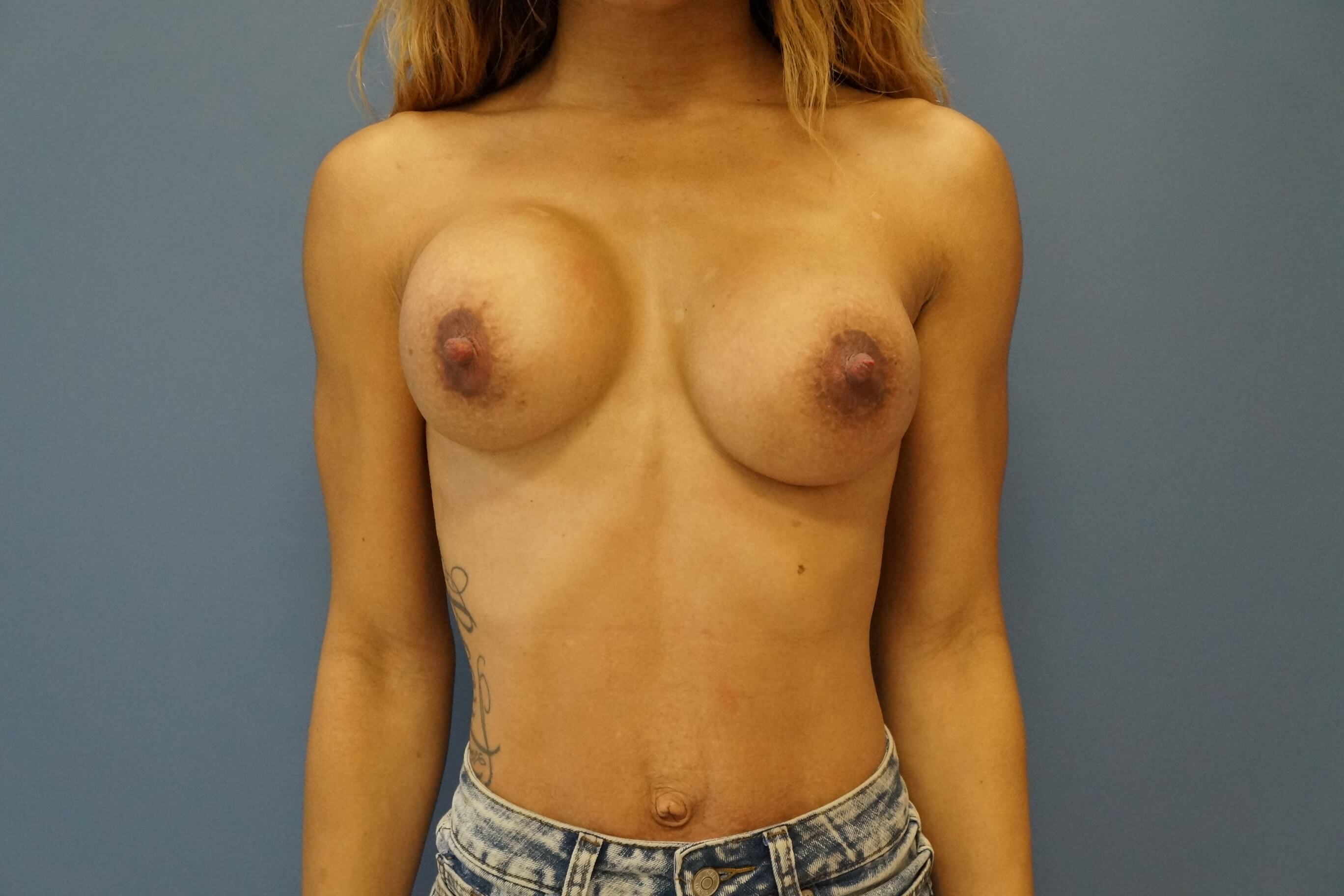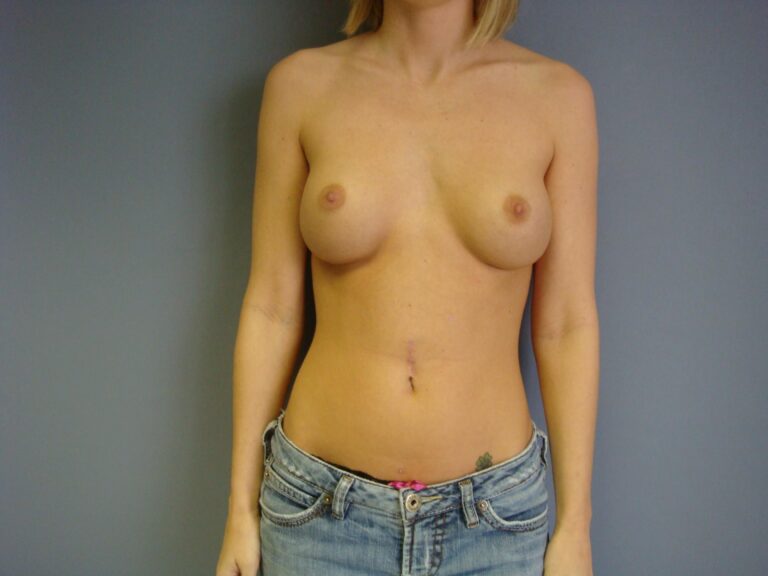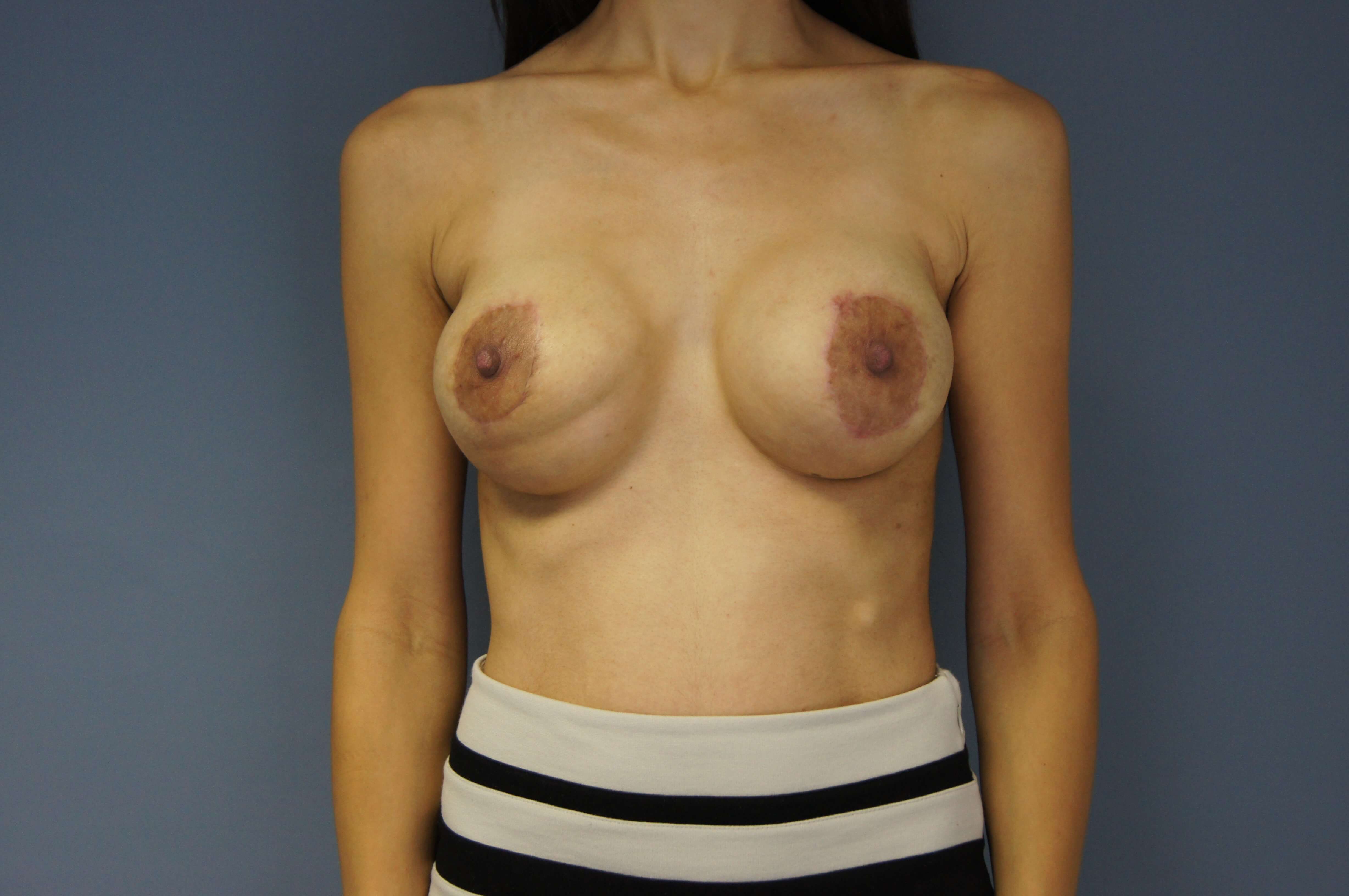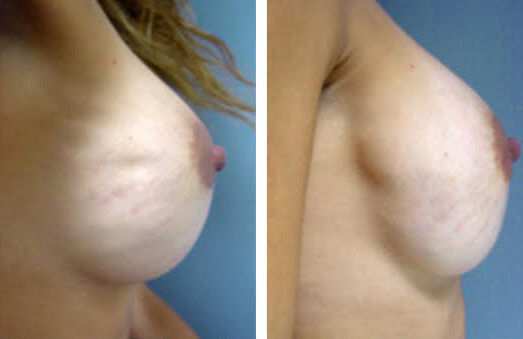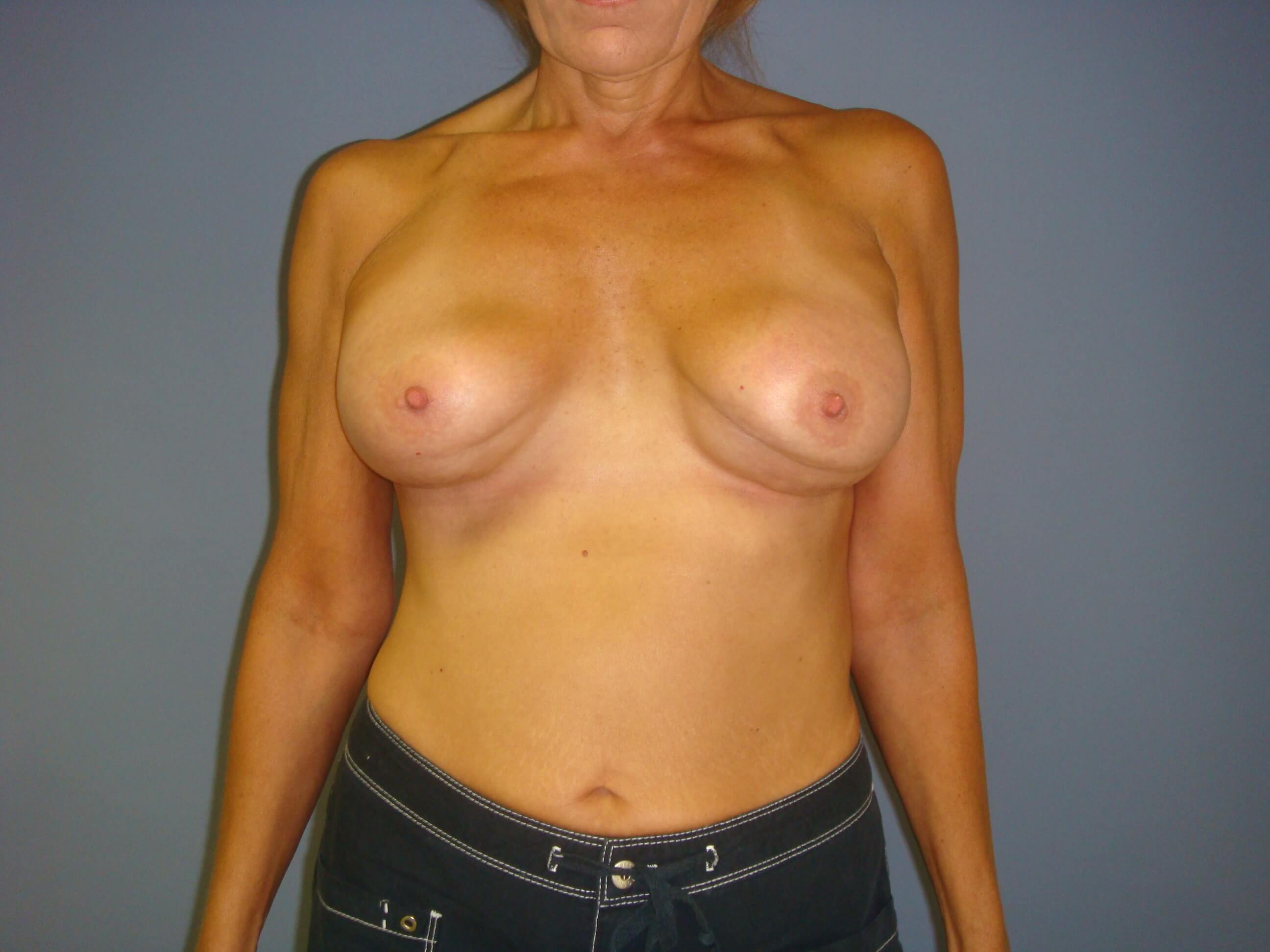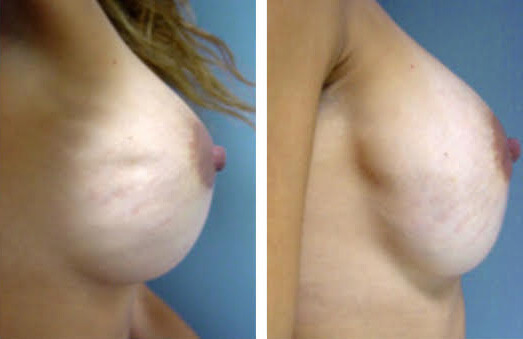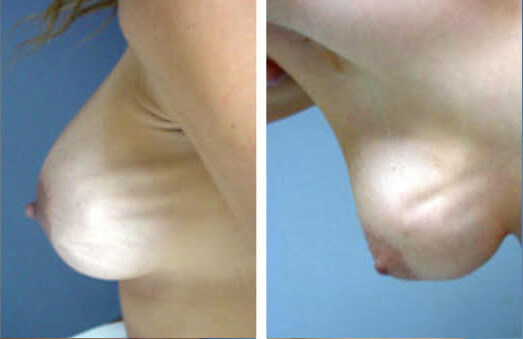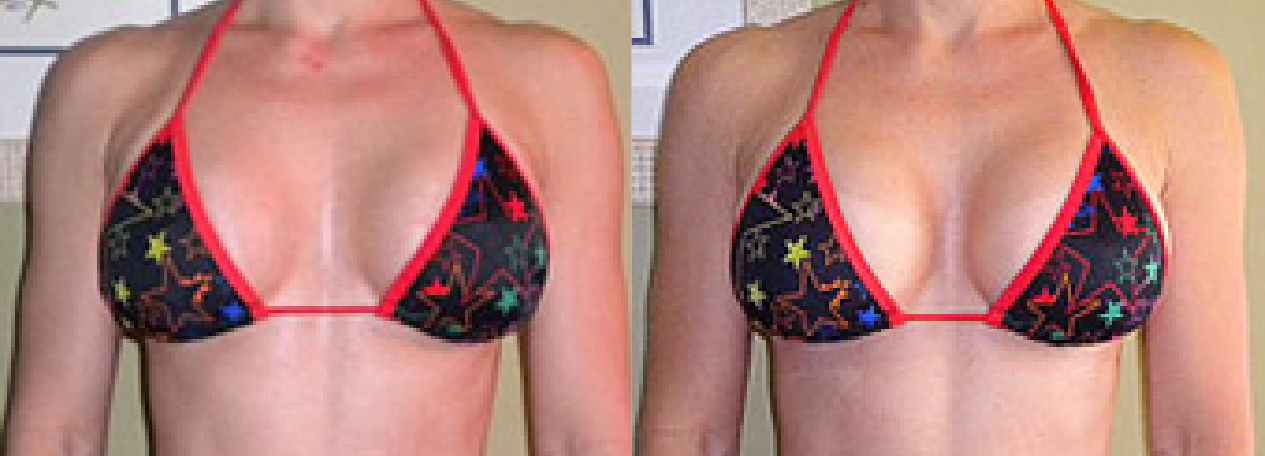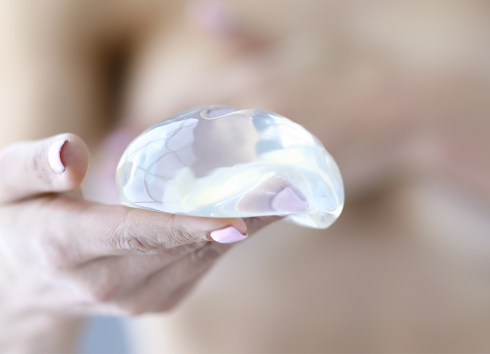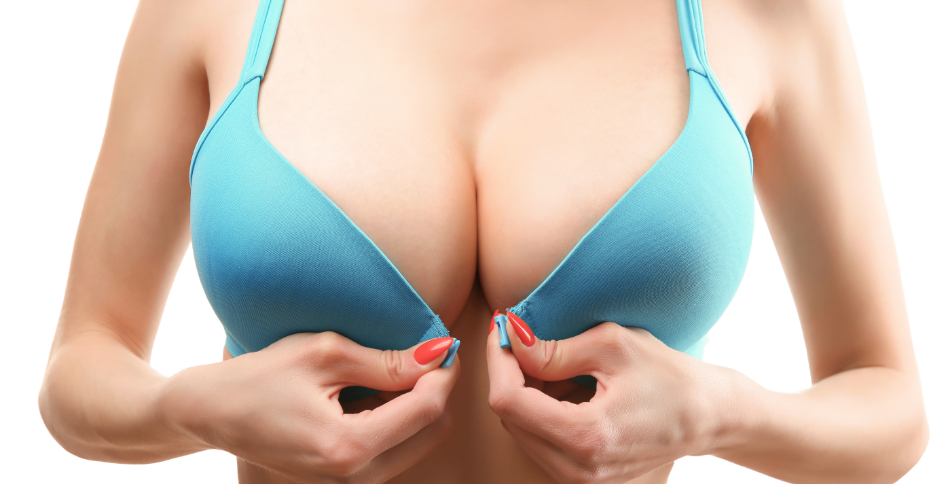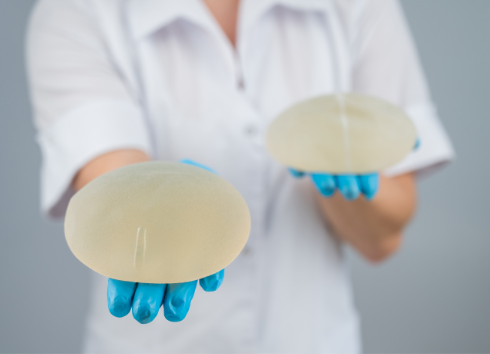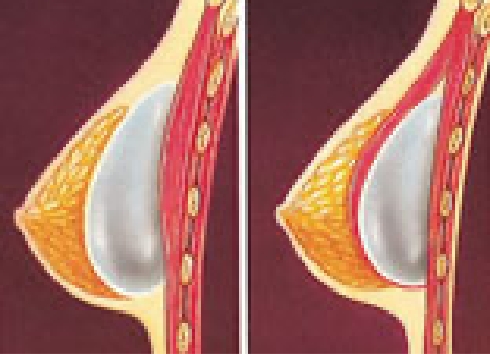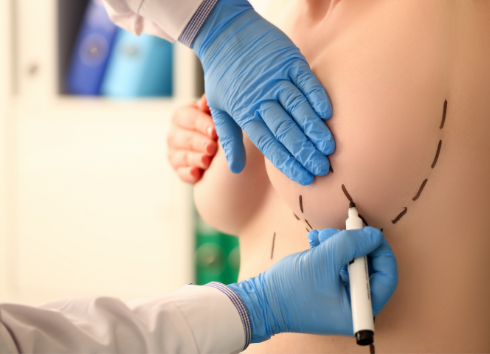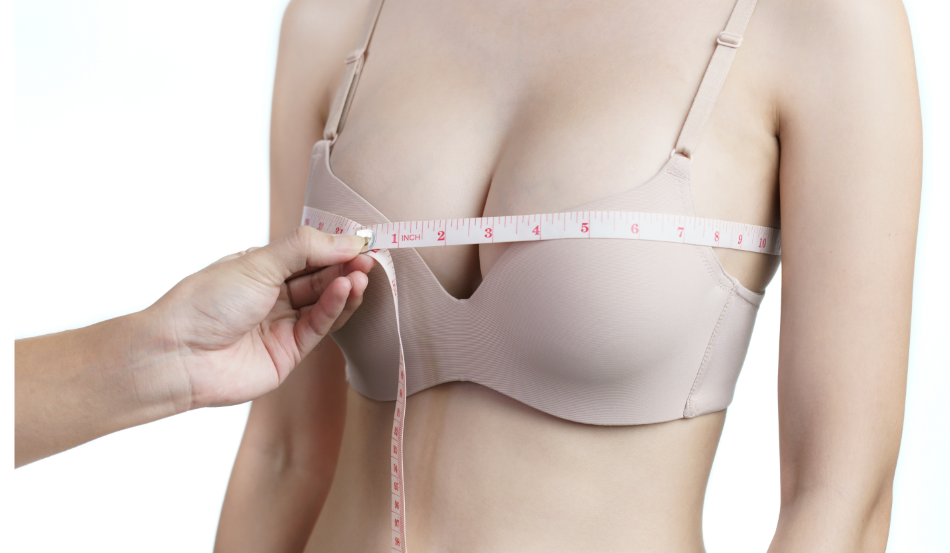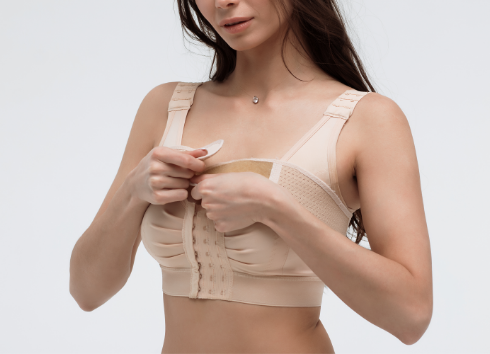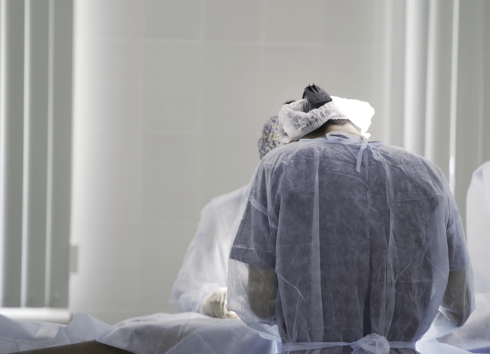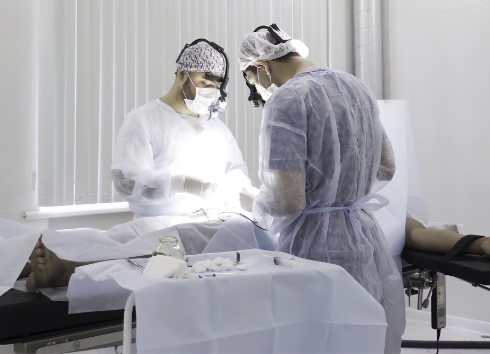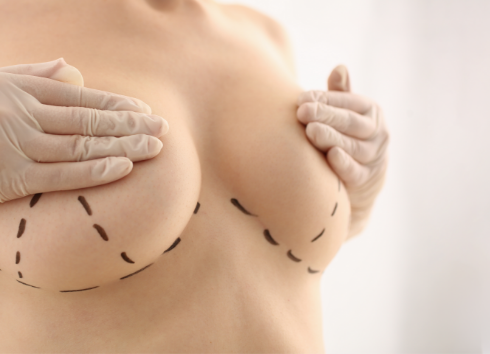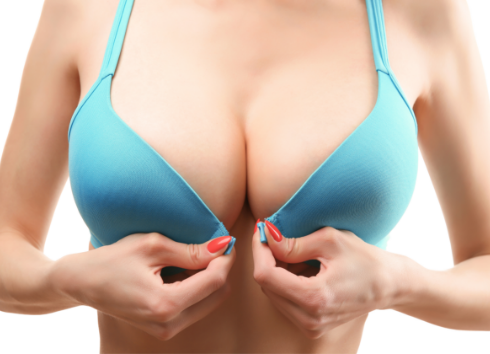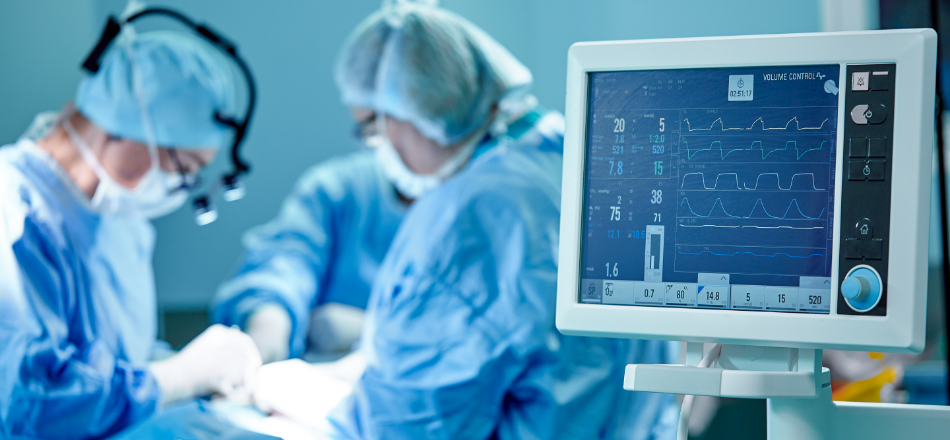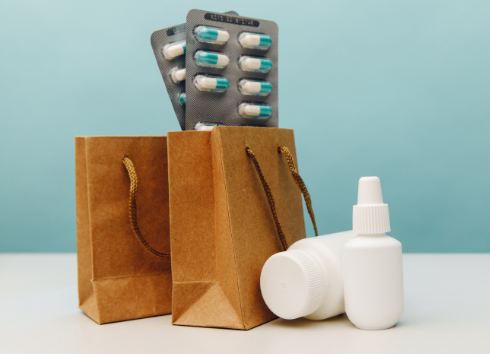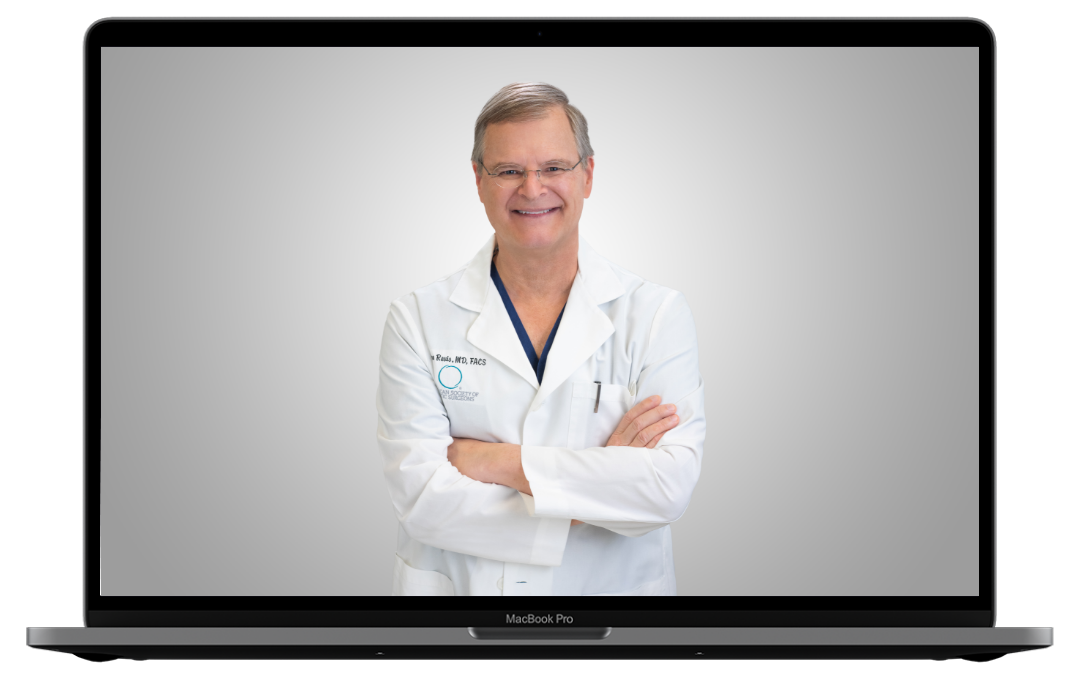-
Correcting Problems with Breast Implants
Although board certified in the entire spectrum of plastic surgery, Dr. Revis has chosen to focus his practice on breast augmentation surgery, which he practices exclusively. Within that spectrum, he has developed a special interest in breast augmentation and its potential problems. Breast augmentation surgery — both new and revisionary procedures — are the most common procedures performed by Dr. Revis (600-650 breast implant procedures each year). In the interest of your safety, he only performs surgery in a fully accredited ambulatory surgery center with M.D. anesthesiologists.
Dr. Revis has been selected as one of only 35 members for the Mentor Worldwide LEAD Council. Read more about Mentor’s LEAD Program Advisory Board.
What Is Breast Augmentation
Breast augmentation is a procedure that is often assumed to be simple in nature and execution but is actually quite complex. Proper surgical technique and attention to detail are essential to good results, and too often these are overlooked. In his opinion, this is why Dr. Revis sees so many patients who are dissatisfied with their augmentation or have developed one or more complications. There is no such thing as a simple breast augmentation, and an attitude of “seen one, seen them all,” commonly held by many plastic surgeons, simply will not suffice when dealing with the subtle complexities and intricacies of breast augmentation.
Following The Path
As a similar example, twenty years ago rhinoplasty was treated the same way, and the usual result was that every nose done by the same plastic surgeon turned out to look exactly the same, regardless of the patient’s facial proportions, preferences, ethnic background, etc. Over the past twenty years an evolution in our thought processes has resulted in the realization that rhinoplasty is a multi-dimensional, complex surgery that must be individualized for each patient. Dr. Revis believes that breast augmentation is long overdue for such an evolution as well, and some plastic surgeons are farther behind in their approach than others. For instance, the notion that the surgeon knows best in the selection of the implant size for his or her patients is ridiculously outdated. We should never presume to know what is best for our patients in this regard. Our responsibility is to present the facts to our patients and guide them in making their own decision that is in their best interests. Similarly, no one incision is right for every patient, and one location for implant placement (be it above the muscle, subpectoral, or totally submuscular) does not satisfy every patient’s needs.
Most Common Reasons
The three most common reasons for breast implant revisions — changing implant size, improving the natural feel and appearance of the breasts, and correcting capsular contracture — should be minimized by a careful and thorough approach to breast augmentation. Dr. Revis’ systematic approach has minimized these revisions in his own practice while improving patient outcomes and satisfaction ratings. He feels that the real focus should be in prevention of these problems rather than in their treatment. However, breast implants are like any other man-made implantable medical device (such as heart valves and artificial joints), and realistically, some patients will require revisionary procedures. Plastic surgeons must be aware of the potential problems that may exist and be equipped to properly diagnose and treat patients so that an acceptable outcome is achieved.
Dr Revis Will Guide You
In treating your specific complaint, our pledge to you is to properly evaluate the problem and to recommend one or more ways in which we can correct the problem. Breast augmentation revision surgery is certainly more complex than primary (initial) augmentation, and you should realize that the proper time for the correct operation to be performed is the first time. However, Dr. Revis has developed considerable experience with the correction of breast augmentation problems and may very well be able to improve your results.
We Educate Our Patients
The cornerstone of Dr. Revis’ approach is to individualize treatment to your specific circumstances and goals and to ensure that you have an adequate understanding of the issues involved so that you are able to make a fully informed decision. This will help you achieve the appearance you desire with the least invasive procedure available, thus creating a mutually rewarding experience. Dr. Revis invites you to visit his office for a complimentary consultation to discuss the procedure in greater detail. You are also invited to email Dr. Revis with your questions, or we can mail you more detailed information regarding the procedure.
Start with the Best
As you consider plastic surgery, one of the most important decisions you will make is choosing your surgeon. Our pledge to you is to provide the latest, state of the art cosmetic plastic surgery in a safe and professional environment. Dr. Revis is a recognized specialist in the field of cosmetic plastic surgery and is board certified by the American Board of Plastic Surgery, the only plastic surgery board recognized by the American Board of Medical Specialties. He is also an active member of the American Society of Plastic Surgeons and has also been named among “America’s Top Surgeons” by the Consumers’ Research Council of America.
Aligning Your Goals
Our goal is to provide you with the ultimate patient experience. Our well-trained staff will help you understand your procedure, our financial policies, the scheduling of your surgery, and your post-operative care. We are available to assist you during our regular office hours, Monday through Friday. Dr. Revis is also available 24 hours a day to post-surgical patients; he will give you his cell phone number after surgery so that you will always be able to reach him with any questions or concerns you might have during your recovery.
-
- Problems with surgical placement or implant position
- Problems with the patient’s tissue characteristics
- Problems with the implants themselves
The need for breast augmentation revisions stem from a number of sources but fall into several broad categories:
Breast augmentation revisions may be needed for the following reasons:
When a problem does arise, the proper correction focuses first and foremost on carefully diagnosing why the problem exists. Many patients have a problem that falls into more than one of the above categories, creating an even more challenging situation.
Problems with Surgical Placement or Implant Position
Too high
Implants that remain too high post-operatively (and do not drop or settle into the correct position)
Too widely spaced apart
Implants that are too widely spaced apart, lacking desirable cleavage or falling into the armpits upon lying down
Problems with the Patient's Tissue Characteristics
Snoopy Deformity
Snoopy deformity (prominence of the nipple-areolar complex characterized by herniation of some of the breast tissue into the nipple-areolar complex, named after its similarity to the cartoon character Snoopy) should be addressed during the initial operation but occasionally only becomes apparent post-operatively.
Tuberous Breasts
Tuberous breasts (characterized by a narrow base of the breast, a widening of the breast near the nipple-areolar complex, and a short or deficient inframammary crease) should be addressed during the initial operation because if overlooked or not treated properly will inevitably lead to an unsatisfactory outcome.
Elongation of the Skin
An elongation of the skin and sagging of the breasts over time as tissue elasticity is lost as a result of aging, sun damage or smoking
Pre-existing Asymmetry
Pre-existing natural asymmetry not corrected during the initial operation. Most breasts differ from one another, sometimes greatly. This may be a difference in size, shape or position and is rarely perfectly corrected during surgery. However, asymmetries should be properly diagnosed and documented preoperatively in an attempt to correct the asymmetry as much as possible during surgery.
Problems with the Implants Themselves
Dissatisfaction
Dissatisfaction with the size of one’s implants is the most common reason women have a second operation is to change the size of their implants (almost always switching to a larger implant). Dr. Revis spends a considerable amount of time with you discussing size, your expectations and your chest dimensions during your initial consultation and during your preoperative visit. Dissatisfaction with your implant size should be totally preventable by a thorough evaluation and decision-making process.
Combination Problems
Implant Visibility
Implant visibility, being able to see the outline of the implants through the skin, usually accompanies rippling and palpability. See rippling explanation above.
Implant Palpability
Implant palpability, being able to feel the implants beneath the skin, usually accompanies rippling and visibility. See rippling explanation above.
-
Solutions to Breast Augmentation Problems
Dr. Revis has developed a scientific approach to breast augmentation and the correction of breast augmentation problems. Depending on your specific problem, a specific solution exists. These may include:
Implant Exchange
Implant Exchange (replacing your present implants with new implants that may be smaller or larger, overfilling saline implants to reduce rippling, changing to a new implant shape such as High Profile, or changing the filling of your implants from saline to silicone or vice versa)
Capsulectomy
Capsulectomy (removing the entire capsule surrounding the implant) is the definitive, state of the art treatment for capsular contracture. This may be combined with moving the implants into a totally submuscular position in an effort to reduce recurrence rates
Capsulotomy
Capsulotomy (making an incision in the capsule surrounding the implants) is not a successful method for treating capsular contracture but can be very useful when the implant pocket needs to be adjusted
Pocket Change
Pocket Change (moving the implants from above the muscle to below the muscle can provide better soft tissue coverage of the implants, reducing a number of the potential complications described herein)
Mastopexy
Mastopexy (breast lift surgery): There are different types of lifts depending on the amount of lifting and reshaping that is required. A crescent mastopexy (using an incision from 10 o’clock to 2 o’clock around the top of the areolar border) can raise the nipple 1-2 centimeters. A Binelli (aka donut or concentric) mastopexy (using an incision around the outer border of the areola can raise the nipple up to 4 centimeters), can raise the nipple 2-4 centimeters. A vertical mastopexy (creating a lollipop-shaped incision around the outer border of the areola and extending downwards towards the inframammary crease) can lift the nipple up to 6 centimeters. A full traditional mastopexy (creating an anchor-shaped or inverted-T shaped incision around the outer border of the areola and extending downwards to the inframammary crease and then medially and laterally along the inframammary crease) can lift the nipple 8 centimeters or more. Please read more about mastopexy on this website if you think you might be a candidate for this procedure. You will also find photographs of patient examples of several types of these lifts.
Internal Pocket Adjustment
Internal pocket adjustment (for bottoming out or other position problems, described more thoroughly below)
Synmastia Repair
Synmastia repair (repairing the connection of the overlying skin to the underlying breast bone or sternum)
Areolar Reduction
Areolar reduction (using an incision placed around the outer border of the areola)
Correction of a “Snoopy” Deformity
Correction of a “Snoopy” deformity (using an incision around the outer border of the areola
Correction of a Tuberous Breast Deformity
Correction of a tuberous breast deformity (using an incision around the outer border of the areola)
Correction of Natural Asymmetry
Correction of natural asymmetry (which may require implants of different sizes or shapes as well as adjustment of the inframammary crease on one or both sides)
-
The Internal Bra Technique
Developed Through Decades of Experience
As a specific example of a problem requiring a thorough, systematic approach and innovative techniques demonstrated in photographs below, Dr. Revis has seen a dramatic increase in the number of patients presenting from other offices with bottoming out of one or both implants. This means that the pocket, or capsule, surrounding the implant has enlarged or stretched under the effects of gravity and have become too low on the chest wall or rests too far laterally when lying down. This may cause the appearance to be unattractive and even uncomfortable when wearing no bra. The implants may hang too low, preventing you from being comfortable when braless. You may also experience the implants falling far apart and even into the armpits when lying down.
Cutting Edge Science
To correct bottoming out, Dr. Revis uses the Internal Bra technique. Using special lighted retractors, Dr. Revis expands the implant pockets (capsulotomy) superiorly and medially, creating room for the implants to be repositioned at a higher level- creating better cleavage, a more youthful shape, and improved fullness in the upper pole of the breast. After expanding the pockets in these directions, he then closes part of the pocket that rests laterally and inferiorly, thus preventing the implants from resting too low or falling too laterally to the sides. Dr. Revis uses permanent sutures for a long-lasting result. These sutures are carefully placed so that the suture material is never in direct contact with the implants inside the body.
For Example
Photos show a 32 year old patient with bottoming out and a wide gap, at pre-op and six weeks post-op. An Internal Bra procedure was performed with implant exchange from 275cc moderate plus profile silicone gel to 325cc moderate plus profile silicone gel.
-
Types of Breast Implants
Silicone Gel vs. Saline Filled Breast Implants
There are two basic types of implants, silicone gel and saline filled. The new silicone gel implants arrive from the manufacturer already filled with cohesive silicone gel (not liquid silicone) in their sterile packaging. Saline implants arrive from the manufacturer empty, in sterile packaging, and are actually filled with sterile saline solution in the operating room. Saline implants typically lift better, and are more perky and rounded, whereas silicone implants are the most natural look and feel that you can achieve.
Your Safer Option
After 15 years of intensive research, the new silicone gel implants were approved by the FDA in November 2006 and continue to be studied. To date, there have been numerous studies involving over one million women with the new silicone gel implants, and these studies clearly show no link between silicone gel implants and any type of disease.
During the 1992-2005 FDA study period of silicone gel implants, there were strict limitations on which women qualified to enter the FDA study protocol. Because of these limitations, the majority of women undergoing breast implant surgery chose saline implants. Now that the restrictions have been lifted and silicone gel implants are available to everyone, the numbers are much more equal in terms of what type of implant a woman chooses.
The Silicone Advantage
Silicone gel implants have an advantage in some patients because of their softer, more natural feel. In fact, many women who have saline or the older type of silicone implants are now having them replaced with the new cohesive silicone gel implants (also called gummy bears). Saline implants have an advantage in some patients because they may be adjusted in the operating room if your breasts are different sizes (thus achieving better symmetry), they lift better (in patients who have any sagging), provide more roundess and cleavage (for patients who want a more augmented look), can be filled above 800cc (silicone only goes up to 800cc), and if rippling is a concern (overfilled saline implants ripple less than silicone).
Your Choice
There are several reasons a woman might choose one type of implant over another, and these include body type, current breast size, and the desired look and feel after surgery. During your consultation, Dr. Revis will discuss with you which implant type might be the best choice for your individual needs. You are encouraged to bring any wish pics or goal pics you may have found to your consultation or preop appointment.
Breast Implant Profiles
Both saline and silicone round breast implants are available in three different profiles — Moderate, Moderate Plus and High. Silicone implants also come in UltraHigh, Xtra and BOOST profiles. The difference between these types is the diameter and projection. The traditional, or original, profile available was the Moderate. For any given size in cc, the Moderate profile implant will have the widest diameter and the least projection (they will be the flattest and widest). The UltraHigh profile implant is the narrowest in diameter with the greatest projection. Moderate Plus, High Profile, Xtra and BOOST implants fall in between. We will discuss which implant type and style would best fit your needs during your consultation based on the measurements Dr. Revis takes of your chest, the review of pre- and postop photographs, and when you try on the implant sizers.
See detailed information about Allergan breast implants and Mentor breast implants
-
Incision Placement
Dr. Revis Performs All Types of Incisions
Dr. Revis performs both inframammary crease and nipple incisions to place breast implants, and he will discuss which might be the best for your specific situation at the time of your consultation.
The incision around the nipple or in the crease underneath the breast provides the surgeon with the most precise control over implant placement, especially when your breasts differ in size or shape. When performed properly, an incision around the nipple or in the crease underneath the breast is minimally noticeable and should in no way prevent breastfeeding or alter nipple sensitivity.
-
Implant Placement
Where the Implant Goes Matters
The incision for breast augmentation may be placed underneath the breast, around the areola (the pigmented skin surrounding the nipple), in the armpit, or in the belly button. Dr. Revis performs all of these types of incisions, and he will discuss which might be the best for your specific situation at the time of your consultation.
A cross-sectional diagram of subglandular (left)
and submuscular (right) augmentationOur Expert Advice
Whenever possible, Dr. Revis prefers to place the implants in a totally submuscular position. Dr. Revis believes that the advantages of placing the implants completely beneath the muscle of the chest wall greatly improve the long-term appearance of your breasts following augmentation. This is for three main reasons. First, mammography is easier and the quality is better when the breast implant is separated from the breast tissue by the layer of muscle. Secondly, there is a lower incidence of capsular contracture when the implants are placed totally beneath the muscle. Capsular contracture occurs when the body produces scar tissue around the implant. This may change the shape of the implant and make the breasts asymmetric. Finally, placing the implants beneath the muscle of the chest wall makes your breasts appear more natural because there is more of your own tissue covering the implant, making it less likely that you will be able to see or feel the implant.
For Best Results
Dr. Revis uses a special technique and instruments to place the implants 100% beneath the muscle of the chest wall without cutting any of the muscle tissue. This entirely submuscular placement will improve your long-term results and minimize your potential complications. It also yields little or no bruising post-operatively. See long-term surgical results by Dr. Revis for patients two years or more post-op.
-
Choosing the Proper Implant Size
What Is Your Ideal?
This is one of the most important decisions you will make. Because of this, we use several approaches to help you make the best decision based on your anatomy, personal preferences, and the appearance you wish to achieve. Interestingly, in a recent national survey, over 80% of patients undergoing breast augmentation stated that a “C” cup was their desired post-operative goal. A “D” cup was the second most popular request.
Expert Guidance
We begin by showing you numerous examples of patients who have had augmentation. By finding someone who has a similar preoperative appearance and evaluating their results with the size they chose, you can get an idea of whether or not you like the size they chose or if you would like to be smaller or larger than their final appearance. You may also wish to bring photographs from magazines or websites to better communicate with Dr. Revis regarding the exact size, shape and “look” you are trying to achieve.
Rely On Our Experience
Dr. Revis will also measure your natural breast and chest shape. This gives him an idea of what size implant will help you achieve the size you want post-operatively. As implant size increases, so does the diameter of the implant. There is an implant that will perfectly match the diameter of your natural breast, and that is a good starting point for discussion. Choosing an implant smaller than your natural breast shape will not provide the proper cleavage and shape following the procedure, and most commonly results in a large gap between the breasts. Similarly, choosing an implant too large for your natural chest shape is more likely to give you an unnatural appearance.
More Than a Cup Size
Unfortunately, implants do not come in cup sizes. Rather, they are categorized by the volume of filler (saline or silicone gel) they are designed to hold. There are several reasons for this. First, your final cup size will be partially determined by your preoperative breast size, and everyone is different in this regard. Secondly, a C cup from one bra manufacturer is not necessarily the same as a C cup from another manufacturer. Although everyone is built differently and bras are not manufactured to a set standard, you can expect that a cup size is approximately 200cc in a person of average height and average build. If you are tall or have broad shoulders, you can expect that number to be slightly higher. Similarly, if you are shorter or have a more narrow chest, you can expect that number to be slightly lower. Although a desire for a certain cup size is helpful to Dr. Revis in guiding you in the selection of the proper implants, it is more helpful to focus on the shape and appearance that you wish to achieve.
Try Before You Buy
Finally, we will have you try on various implant sizers in a surgical bra. You may wish to bring a bathing suit, tank top or other clothing to see how you will look with different implant sizes. This helps confirm that you are making the right implant choice. We usually perform the trying on of breast implant sizers during the preoperative visit. This is because the initial consultation is very thorough, lasts approximately one hour, and tends to provide you with a tremendous amount of information to digest. In his experience, trying on implants at this point in the developing physician-patient relationship rarely leads to a conclusive decision and almost always needs to be repeated. However, we also understand that many patients travel a long distance for a consultation with Dr. Revis. With that in mind, we are willing to be as flexible as possible with out of town patients and allow the trying on of implant sizers during the initial consultation if we are given enough advance notice to schedule a more lengthy appointment. Also, please feel free to make as many trips to the office as you need to be satisfied with your implant selection. Our goal and the measure of our success is your happiness.
Commit With Confidence
Using these three approaches, you will be able to accurately select the implant that will give you the appearance you desire. When asked about size post-operatively, over 95% of our patients feel they chose the right size implant to achieve the appearance they envisioned. The remaining few state that they might have gone larger if they were to choose again. We almost never hear that a patient wishes they had chosen a smaller implant. Therefore, if you are debating between two sizes, it is probably a better decision to opt for the larger size.
Hopefully the above information has helped to clarify some of the issues surrounding breast augmentation. The following information will help prepare you for your procedure.
-
The Consultation
Enhance the Size and Shape of Your Breasts
During your initial consultation, Dr. Revis will inquire about your medical history, prior procedures, medications, allergies, and your motivations for seeking plastic surgery. It is very important that you be thorough when providing your medical history, as this information helps to prevent complications during your care. When asked about medications, be sure to include any vitamin or herbal preparations, as these can affect your blood pressure and clotting ability. Honesty regarding your use of tobacco and alcohol is also very important, as these may have a profound impact on your recovery period and your ability to heal following your procedure.
Thorough Consultation
After reviewing your medical history, Dr. Revis will discuss your concerns, priorities and motivations for pursuing plastic surgery, as well as your fears. After examining you, Dr. Revis will be able to offer advice and options to help you achieve the appearance you desire. He will explain the advantages and disadvantages of the different options you have before you. You will also be shown the different types of breast implants.
Transparent Process
At the completion of your consultation, you will be given a written estimate of the cost of your procedure. At this time, you will also have the option to schedule your procedure if you so choose. The decision to undergo surgery is a very important one, and the final decision should be given very careful consideration. Dr. Revis realizes the importance of this decision, and at no time will you be pressured to make a decision. You are also encouraged to bring your spouse, significant other, family member, or a friend to your consultation.
You Have Choices
Breast implants come in many different types, and they may be placed through different incisions and in different locations. Once you have decided to undergo a revision of your augmentation, there are three main choices you must make — incision location (whether or not your prior incisions will allow the proper procedure to be performed or if you may need additional incisions), whether or not your implants will be replaced and if so then the new implant type and size, and whether or not the implant pockets will remain the same or be changed. This can be quite confusing, and the information presented here is to help you understand the various issues involved in making your decision.
-
Where Your Procedure Will Be Performed
Top Facilities
Dr. Revis has been granted staff privileges at our local hospitals and outpatient surgery centers. In the interest of the safety of his patients, he only performs surgery in fully accredited facilities with the proper services and staff. Dr. Revis usually performs breast augmentation at Physicians Outpatient Surgery Center (POSC) at the Holy Cross HealthPlex or Imperial Point Surgery Center, both fully accredited ambulatory surgery centers run by a hospital. The staff of these facilities are very experienced in the care of plastic surgery patients in general and specifically in the care of Dr. Revis’ patients.
-
Types of Anesthesia
Safe & Comfortable
Anesthesia is an essential part of any surgical procedure and must be performed safely. Endotracheal intubation is the deepest form of anesthesia. You have an endotracheal tube inserted into your trachea, you are given muscle paralytic agents, and the ventilator is doing your breathing for you during surgery. This form of anesthesia is usually not required for breast augmentation unless the patient specifically requests intubation or the patient has a difficult airway as assessed by our board certified M.D. anesthesiologist.
Just Like Sleeping
Intravenous sedation, called twilight sleep, is a combination of local anesthetic administered at the surgical site by Dr. Revis and intravenous sedation administered by the anesthesiologist. You breathe for yourself, but you are in a deep sleep throughout the procedure. You should feel no pain, and you will not remember the procedure.
Breathe Easy
An intermediate form of anesthesia, the laryngeal mask airway (LMA), is a relatively new technique. This technique is similar to twilight sleep in that you are breathing on your own, but the method of sedation differs. With an LMA, you actually breathe anesthetic gases administered by the anesthesiologist, rather than receive intravenous sedation via your intravenous line. These anesthetic gases cause you to sleep during the procedure. At the completion of the procedure, the gases are turned off and you wake up from your sleep. You will feel no pain, and you will not remember the procedure. This is the most common type of anesthesia used by Dr. Revis because he feels that the effects of this type of anesthesia leave your body the fastest, allowing you to feel better faster with very little likelihood of post-operative nausea.
After Your Procedure
The prevention of post-operative nausea and vomiting is also a focus of Dr. Revis’ approach to breast augmentation. To improve your overall experience and ensure you feel better faster following your augmentation, he has developed a technique that has resulted in a very low incidence of post-operative nausea and vomiting. You may be given Zofran and/or Emend, the best medications available to prevent nausea and vomiting. Dr. Revis feels it is a very important component of his overall approach to make sure that your experience is as pleasant as possible.
Dr. Revis will discuss all of these options with you more thoroughly at the time of your consultation, and please ask him about anything you do not understand.
-
Details of the Procedure
What to Expect
Breast augmentation usually takes one to one and a half hours to perform. After you have changed into a gown and had your intravenous line started, you will be given a dose of intravenous antibiotics as a precautionary measure. Dr. Revis will use a surgical marking pen to identify certain landmarks on your chest. This ensures proper implant placement and symmetry post-operatively. He will also review the entire operative plan with you including incision location and implant type and size.
A Painless Process
After you are properly anesthetized in the operating room, Dr. Revis will inject a solution of local anesthetics along the borders of your breasts, underneath the intended incision site, and into the muscle under which the implants will be placed. This injection solution consists of a special combination of lidocaine (xylocaine), marcaine (sensorcaine, bupivicaine) and epinephrine. This accomplishes several objectives. First, the epinephrine causes vasoconstriction of the area, reducing your potential for bleeding and bruising. Secondly, the lidocaine provides a rapid numbing of the area. Although you are asleep, this prevents the brain from registering any pain from the region during the operation. Studies have shown that this preemptive analgesia actually decreases your sensation of pain post-operatively, decreases the amount and length of time you will need to take pain medication post-operatively, and also leads to a more rapid return to normal daily activities. Finally, the marcaine component of this local anesthetic mixture is a long-acting local anesthetic. This actually prolongs the numbness of the area, making you more comfortable following surgery and delaying the time at which you will begin to need any pain medications.
Incisions and Pocket Creation
After allowing time for the local anesthetic mixture to take effect, Dr. Revis will make the incisions necessary for placement of the implants. Using the newest techniques and instruments, Dr. Revis is able to create a pocket beneath the muscle of the chest wall without cutting any of the muscle. This is extremely important for the maintenance of long-term results.
Insertion and Filling of Saline Implants
Once the pockets have been created, the breast implants are inserted and filled with saline. Dr. Revis uses a no touch technique when placing the implants into the pocket. This includes using new sterile towels to drape around the breasts, changing his gloves and washing the outer surface of these new gloves in sterile saline, and only opening the sterile implant packaging immediately prior to insertion. Dr. Revis is the only person who ever touches the implants, and his goal is to minimize the time the implant is exposed to the air in the operating room prior to insertion into the pocket. Additionally, Dr. Revis does not allow the implant to come into contact with any instruments or the skin during the insertion process. He feels that this minimizes the possibility of any foreign material coming into contact with the implant and causing any inflammation.
Clean & Safe
During the filling process for saline implants, Dr. Revis uses a closed system to fill the implants with saline. This means that the saline that enters the implant is never at any time exposed to the air in the operating room. The saline flows from a sterile bag through a sterile tubing directly into the implant. Dr. Revis feels this additional precaution prevents any foreign material from inadvertently being injected inside the implant.
Insertion of Silicone Breast Implants
Dr. Revis will use the innovative Keller Funnel to place the silicone breast implants into the new pockets. The Keller Funnel employs the no-touch technique, reduces trauma to both the implant and patient tissues, and allows the use of smaller incisions. Read more about the Keller Funnel.
Fully Certified
Dr. Revis is certified by Keller Medical and uses the Keller Funnel in every silicone breast implant procedure he performs, as part of his ongoing effort to continuously improve surgical results for his patients.
Suturing and Dressing
After the implants have been placed (and filled properly in the case of saline implants) and Dr. Revis has assessed your final shape and size, the incisions are carefully closed with absorbable sutures to minimize your scar. A sterile dressing is applied to the incisions, and a soft surgical bra is placed over your breasts. Dr. Revis uses a technique in which all of the sutures are placed beneath the skin and are absorbed by your body. Not having to undergo suture removal has improved patient comfort and satisfaction.
-
Products to Help You Heal
Pick these up before your procedure
Silagen or Skinuva– Made with 100% pure medical grade silicone, these products offer a clear, fast drying gel that will help flatten, soften and smooth scars. It also helps reduce redness, discoloration, itching, and pain.
Arnica Montana/Bromelain Complex is a natural product from Sweden which has been shown in clinical studies to reduce post-operative bruising and swelling. Begun the evening prior to surgery, this product is continued for four days post-operatively.
These products are available for purchase in our office. Please ask us about these products and others if you have any further questions about whether or not these would be beneficial for you during your healing period.
-
After Your Procedure
Always at Your Service
Breast augmentation revisions are performed as an outpatient procedure. After recovering in the recovery room for approximately one hour, you will be able to go home in the company of a friend or family member. Dr. Revis will also give you his cell phone number so that you may reach him directly at any time with any questions you might have
Pleasant Recovery
When you wake up from your procedure, you will be in the recovery room and will be wearing a soft surgical bra or sports bra. You may remove this bra on the second day following surgery and begin showering daily. After showering, simply pat your incisions dry and replace your surgical bra or a sports bra.
Post Procedure
The antibiotics that were prescribed during your preoperative visit (usually Augmentin) should be taken twice daily beginning on the evening prior to surgery. Continue this medication for five days post-operatively or until it is gone. The pain medication prescribed by Dr. Revis during your preoperative visit should be taken fairly regularly, every four hours or so, during the first 24 hours (when you are not asleep, of course). Most patients find that they are able to transition to Tylenol or Ibuprofen after three or four days. It is not safe to drive a car within 24 hours of taking pain medication, as your reflexes and alertness may be altered. Dr. Revis may prescribe a muscle relaxant (usually Flexeril) for you if he suspects that your muscles may be tight and uncomfortable following surgery. If so, you may take one tablet every eight hours if needed for muscle tightness.
It's Me Time!
You should plan to take it easy following your surgery. No strenuous activities, heavy lifting (over 20 pounds), aerobic exercises, swimming, contact sports, tennis, or golf should be planned for the first three weeks. As Dr. Revis monitors your recovery, he will advise you when it is safe to resume specific activities.
Insertion and Filling of Saline Implants
Unlike many surgeons, Dr. Revis does not feel that you must follow any specific regimen of straps, massaging, etc., following your augmentation. His philosophy is that the time to place the implants properly and precisely is in the operating room through careful technique and attention to detail. In his opinion, there is very little manipulation that straps or massaging will accomplish in the post-operative period to change the position or shape of an improperly or hastily placed implant. Dr. Revis will, however, occasionally recommend gentle massaging as a way to relax the muscle under which the implant is placed. In select patients, this can lead to a more rapid relaxation of the muscle and a softening of the breasts. Dr. Revis will instruct you during your post-operative visits in the proper technique of massaging the implants if he feels this would be of benefit to you.
-
The Results You Can Expect
You will notice an improvement in your breast shape and size immediately. You may experience tightness in your chest, but this rapidly resolves as the muscles relax. A very mild swelling usually takes several weeks to subside. You should be able to resume your normal daily activities the day after surgery, and you should be able to resume all of your physical activities (sports, aerobics, running, etc.) within three weeks of surgery.
Please see our Preoperative Instructions and Postoperative Instructions for additional information.
Call 954-630-2009 to schedule your consultation
Breast Augmentation Before & After Photos
free Virtual Consultation
Get a FREE, no obligation consultation via email! Simply send in your photos to consult@drrevis.com and we will get back to you quickly!
